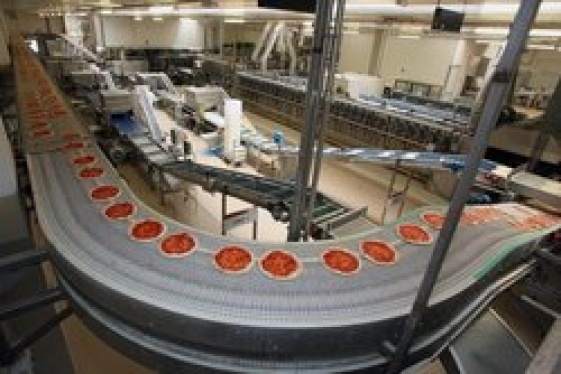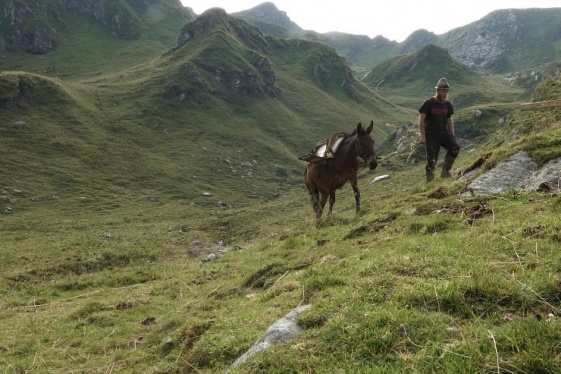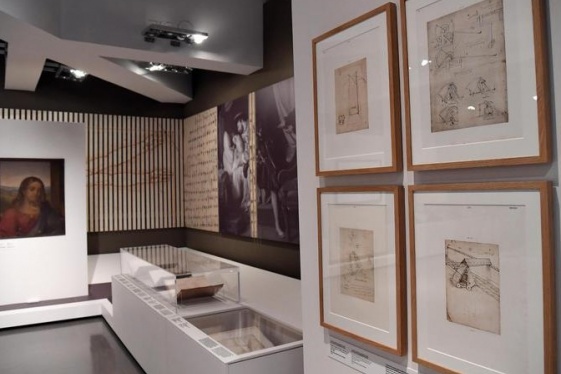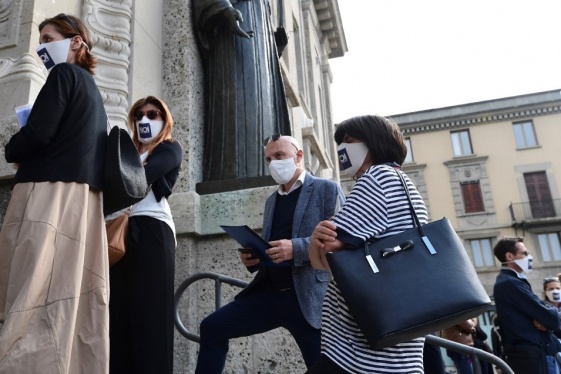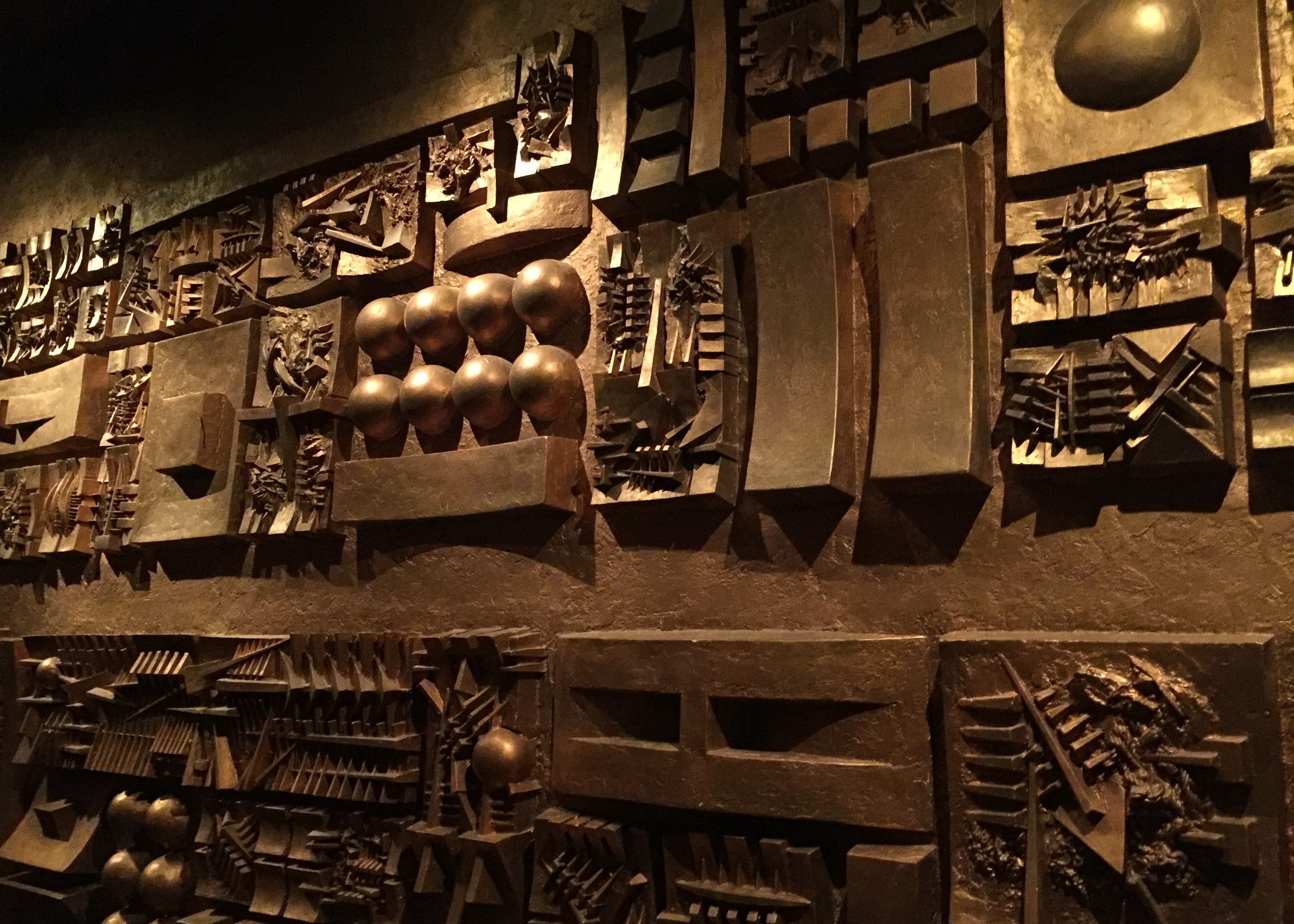

Built for the Galleria Giò Marconi in Milan, where a solo show of Pomodoro was held in 1995, in 1997 the Labyrinth was exhibited in the Medici Palace of San Leo in the Rimini province, Emilia Romagna. The atmosphere is inspired by the Epic of Gilgamesh, the first epic poem in human history, engraved on eleven clay tablets in cuneiform characters. Down the stairs, in fact, the entrance waits for us, face to face with the Door of the Seals. A wall-threshold on which are imprinted signs and reliefs with an abstract, symbolic value. A fundamental place of communication and understanding, representation of human drives.
Once the threshold has been crossed, the rotary room materializes: inside it, the giant roller is still tracing a fantastic path on the walls, a labyrinth within a labyrinth. Further on, the mural of memory, written in a secret language. Then the Room of the Millstone almost alien in the incessant signs in the metal.
The lintel door leads us to Cagliostro's room: a pile of debris and excrement covers the floor, fossil footprints scattered everywhere suggest a secret cosmic life. Writings that dialogue with the marine plots of the macroscopic cuttlefish bone on the wall. An adventurous atmosphere, artistic and atavistic at the same time, could be Hephaestus' lair with the forge fire extinguished.
Giorgio Pomodoro, known as Giò, was born in 1930, studied chiselling during high school and then, on the death of his father in 1955 with his elder brother Arnaldo, also a sculptor, he moved to Milan and began to attend the first exhibitions of a certain importance, in Florence, then in Milan, being close to the themes of Lucio Fontana and the Italian Abstractionists. After these first youthful enthusiasms, he became involved in research defined as the "rational representation of signs".
He then specializes in bending metals, such as iron, tin, lead, silver and bronze. He arrives at the "cycle of matter, vacuum and geometry" with Superfici in tensioni, Folle e Soli, Archi e Spirali, where tensions thicken in torsions. In 1978 he also tried his hand at scenography: for Verdi's opera La forza del destino, performed at the Arena di Verona, and in 1980 for Mozart's Magic Flute, staged at the Teatro La Fenice in Venice.
Giò Pomodoro's works are placed in important public and private collections all over the world: Nelson Rockefeller Collection in New York, the Modern Art Galleries in Rome and Turin, the Museum of Modern Art in Mexico City. Pomodoro manages to transcribe imaginary and perhaps alien languages through sequences of shiny signs alternating with opaque ones engraved on metals. The theme of the sun with its broken rays in relief is reproposed almost as if it were a new pre-Columbian cult, but always remaining strictly anchored to the abstractionism of the Italian postwar period.
His works, even of very small size, never lose strength and energy, if anything, they are concentrated among the glow of the worked metals, among the signs that dig the surface and in the alternation of full and empty, smooth and rough, oxidized and pure. He and his brother Arnaldo have left an essential mark on Italian sculpture in the second half of the twentieth century, touching the goldsmith's work and the set design.
You may be interested
-
Il Console Generale Usa: su turismo e seta s...
In mattinata ha incontrato il sindaco di Como, Mario Lucini, assieme all'assessore Gisella...
-
Small and Medium Enterprises as the Italian...
by Claudia Astarita A recent study on 120 artisan SMEs of excellence – conducted...
-
The Italian Heritage Society of Indiana Lect...
Sunday, November 23 - 2 pmWhen: Sunday, November 23, 2014 2:00-4:00 pm Where: UL 1126 in t...
-
'Freedom Fighters', i Kennedy e la lotta per...
John F. Kennedy, Robert F. Kennedy, Martin Luther King. Tre figure iconiche di quel moment...
-
'It's not a job, it's a disease': Italy's reb...
“I feel much more comfortable here under the rain, wet and cold than in an apartment in th...
-
'Mechanic' of music Da Vinci's organ reconstr...
No one had ever heard its "voice" before: a warm, ancient sound similar to that of a flute...
-
'They were never alone': In Italy's darkest h...
International charity workers are breathing a sigh of relief as they pack up a field hospi...
-
'We want truth and justice': Families of Ital...
"We don't want revenge, we want justice," said Stefano Fusco, 31, who created a group on F...




